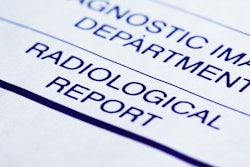Risk-based lung cancer screening using a model called the PLCOm2012-Update appears to mitigate racial and ethnic disparities and improve screening performance compared to a protocol based on the USPSTF 2021 criteria, researchers have found.
Why? Because the PLCOm2012-Update model takes risk of lung cancer into account, reported a team led by Eunji Choi, PhD, of Stanford University School of Medicine. The study results were published October 26 in JAMA Oncology.
"The findings of this study suggest that risk-based screening reduces racial and ethnic disparities while maintaining improved screening efficiency," it noted.
In 2021, the U.S. Preventive Services Task Force (USPSTF) updated its lung cancer screening recommendation, lowering the starting age from 55 to 50 and adjusting smoking history from 30 pack years to 20 pack years. The change was intended to expand the pool of eligible individuals for screening, but some expressed concern that it did not in fact accomplish this. Choi and colleagues sought to validate the updated version of the Prostate, Lung, Colorectal, and Ovarian Cancer Screening Trial 2012 (PLCOm2012) -- a risk prediction model based primarily on White individuals -- across races and ethnicities in the U.S., comparing it to the USPSTF's 2021 recommendation.
The study included data from 105,261 adults with a history of smoking from the Multiethnic Cohort Study, which enrolled participants between 1993 and 1996 and followed them through December 2018. The researchers used the PLCOm2012-Update model to calculate six-year lung cancer risk and screening eligibility based on a six-year risk threshold equal to or greater than 1.3%. The team assessed outcomes such as the two models' predictive accuracy, screening eligibility-incidence (E-I) ratio (that is, the ratio of the number of eligible individuals to screen to incident cases; higher ratios are more desirable), and screening performance (sensitivity, specificity, and number needed to screen to detect one lung cancer).
The racial and ethnic makeup of study participants consisted of the following:
- 27.6% white Americans
- 25.9% Japanese Americans
- 20.3% Latino Americans
- 18.3% African Americans
- 7.9% Native Hawaiian/Other Pacific Islanders
Of this study population, 1.4% developed lung cancer within six years of enrollment in the Multiethnic Cohort Study, Choi and colleagues noted.
The PLCOm2012-Update demonstrated good predictive accuracy across all races and ethnicities, with an area under the curve (AUC) range of 0.72 to 0.82 (with 1 as reference). This model also reduced racial and ethnic disparities compared to the USPSTF 2021 recommendation, due to its risk-based screening approach.
| Disparity of screening eligibility-incidence (E-I) ratio among racial and ethnic groups using PLCOm2012-Update vs. USPSTF recommendations | |||
|---|---|---|---|
| Model | African Americans | White Americans | p-value |
| USPSTF 2021 | 9.5 | 20.3 | < 0.001 |
| PLCOm2012-Update | 15.9 | 18.4 | < 0.001 |
The PLCOm2012-Update showed better overall and race and ethnicity-specific performance compared to the USPSTF 2021 criteria, with a sensitivity of 67.2% compared with 57.7% and a lower number needed to screen (26 vs. 30) at a similar specificity (76.6%).
"[The] E-I ratio that quantifies the screening-eligible versus incident cases was 53% lower [under the PLCOm2012-Update] among African Americans compared with White participants under the 2021 USPSTF guidelines -- despite the increased eligibility among African American individuals … compared with the 2013 USPSTF guidelines [21.4% vs. 12.9%]," the team noted. "This finding suggests that, while the revised USPSTF 2021 criteria doubled the eligible pool among African American individuals compared with the 2013 criteria, it does not fully cover the population at high risk of lung cancer."
The study findings offer a valuable contribution to the literature regarding lung cancer screening uptake, wrote a group led by Lecia Sequist, MD, of Massachusetts General Hospital and Harvard Medical School, both in Boston, in an accompanying commentary.
"We applaud the authors' work, in both the current article and in generating an impressive series of research studies over 10 years that are focused on modeling the most efficient pathway to refer patients for LCS," the group wrote. "We think it will be important to partner such models with … innovations that move LCS away from its heavy reliance on smoking-related questions, which increase stigma, and toward normalization of screening for lung cancer, akin to breast, colorectal, and cervical cancer screening programs."
The complete study can be found here.



















